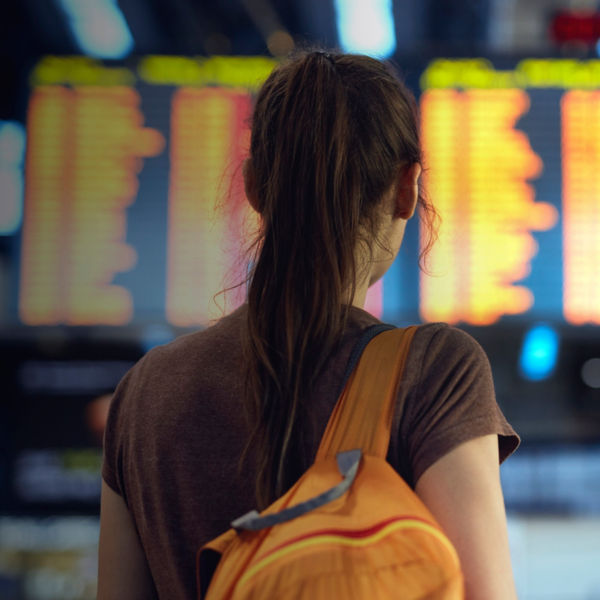
First thing’s first: Train is not the most efficient way to travel in the United States. You know this. Cars are faster, planes are faster, sometimes buses are faster. But traveling by train isn’t about getting someplace fast, it’s about having an adventure on your way to your destination. Amtrak, which is the only nationwide passenger train service in the U.S., has dozens of long-distance routes that offer the best chance to see some of this country’s most iconic landscapes.
Choose train travel and you’re essentially signing up for a hotel on wheels, as the long-distance routes offer private rooms, lounge cars, dining cars with three-course meals, even dedicated observation cars that maximize the view. And Amtrak has routes that access some of the country’s signature national parks, so you can tick off bucket-list adventures on your way to your destination. Bring a book, a board game, a bottle of wine (that’s allowed!) and relax as you slide through the countryside.
In this guide, you’ll learn:
- Train trip planning tips
- Gear and baggage considerations
- What to carry on the train
- Train etiquette and what to expect
Train Travel Planning Tips
Amtrak’s website has an interactive route planner that will help you lay out your trip. Use it. And download the Amtrak app, which allows you to book your trip, updates you on train status, and provides details about each train station on your route.
Show up early to the station, but not as early as a flight (Amtrak recommends 30 minutes ahead of departure). Plan for an hour if you need help with your bags.
Check for COVID-19 protocol updates. Currently, Amtrak is booking trains to full capacity but requiring guests to wear masks in all cars (except private rooms) and in stations. Dining cars and lounges are open now, but have been limited in the past.
Fares
There are three standard coach fares you can purchase: Saver, Value, and Flexible, the biggest difference being that Saver fares are cheaper, but non-refundable with no exceptions, while Flexible tickets are fully refundable, even at the last minute. Value Fares are refundable with certain restrictions. Beyond coach tickets, you can choose Business Class, which gets you extra legroom, free soft drinks and a dedicated car, and Premium fares, which include complimentary food and beverages and access to ClubAcela lounges (similar to an airline member lounge) at certain stations.
Overnight Options
Most long-distance routes also offer Sleeper accommodations. You can purchase a coach ticket on an overnight train—it’s not as bad as flying coach. The train’s coach seats are much nicer than their airline equivalent, with plenty of room to stretch out and seats that actually recline more than a few inches. With a pillow, blanket and eye mask, you could rough it overnight in a coach seat and save some money. But Sleeper Cars will give you a private space to hang out and sleep, which could elevate your train trip significantly. You have two options on most trains, a Roomette or Bedroom, both of which include all meals and non-alcoholic drinks. Roomettes are smaller and occasionally have their own toilet. Bedrooms are bigger with more room to stretch out and bathrooms with hot showers.
If you’re looking at an extended train trip, or multiple trips within the same month, look into the USA Rail Pass, which will net you up to 10 journeys within a 30-day period for $499 (coach). This is a good option if you want to take a long-distance route and hop off at various destinations along the way.
Gear and Baggage Considerations
There are less baggage restrictions on trains compared to planes. You can carry on two personal items, like a purse or backpack (up to 25 pounds and 14x11x7 inches) and two carry-on bags (up to 50 lbs. and 28x22x14 inches) so if you pack light, you can have all of your bags with you the entire trip. Just keep in mind you’ll be carrying and storing those bags through the station, up steps, and down narrow aisles—meaning that a backpack with considerable internal volume will be your best friend. Large duffels with backpack straps can work too, though they’re less comfortable to wear for extended periods. Rolling luggage sized to airline carry-on specs is great because it will easily fit between aisles and in cargo spaces.
If you need more gear, you can check two bags for free (up to 50 lbs. and 75 inches long) and bring two more bags for $20 each. Some stations have train-side bag checks where you take your own bags to the baggage car and get a claim ticket from an Amtrak crew member. Amtrak has also become increasingly accommodating when it comes to equipment like bikes, surfboards, skis and snowboards, which can be checked in lieu of one of your bags. Some trains even have train-side bicycle service with dedicated space on the cars for bikes that aren’t packed in boxes.






















